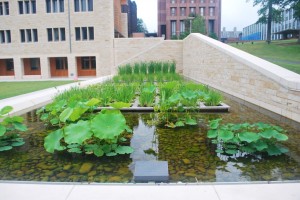Those of you who follow my twitter stream know that I recently passed the exam to become accredited as a LEED Green Associate. The LEED Green Associate is a new credential, and the first level of credentialing that also includes the LEED-Accredited Professional + Specialty.
Why did I do it? I wanted to have a better understanding of the various LEED requirements and sustainability issues when working with my architect and engineering clients. Many of my A/E clients are AP certified — most before the new burdensomedetailed requirements were issued (not that I’m bitter or anything!). I, on the other hand, knew just enough about green design to be dangerous.
While I’m ready not exactly ready to go out and leap tall (green) buildings (no doubt complete with vegetated roof) in a single bound, I do have a much broader understanding of the intricacies of complying with not just Code issues but also LEED issues in mind.
So, to return to the title, should YOU get a LEED Green Associate accreditation? Yes. If you are reading here, then you probably would benefit. (Unless you StumbleUpon’d your way here, in which case, not necessarily!) If you work with architects and engineers, and certainly if you are an A/E and haven’t yet gotten green credentialing, get your Green Associate credential. You will learn about a wide cross-section of green issues, including sustainable sites (SS), water efficiency (WE), energy & atmosphere (EA), materials & resources (MR), indoor environmental quality (EQ), innovation in design (ID), and regional priority issues.
Are you interested in becoming a Green Associate? Let me know and I can share some study tips.
Or, are you already accredited with the USGBC? Under the old or new system? What has it taught you? Share in the comment section below.
———————–
“LEED Green Associate” and the LEED Green Associate logo are trademarks owned by the U.S. Green Building Council and are awarded to individuals under license by the Green Building Certification Institute.




